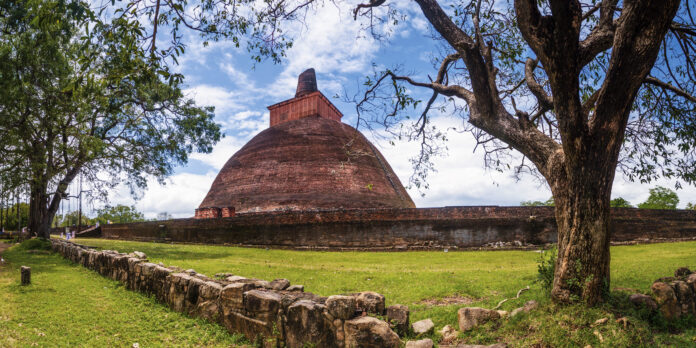By The Frontpage Journal
Tucked away in the forests, mountains, and forgotten corners of Sri Lanka lie ancient temples that time has nearly erased. These are not the grand, polished sites that appear in tourist brochures but quiet sanctuaries, often abandoned or neglected, where faded murals and weatherworn carvings still whisper the stories of centuries past. For those who venture beyond the usual travel paths, these lost temples offer a rare window into the island’s spiritual and artistic legacy.
Many of these sacred sites were once vibrant centers of learning, meditation, and art. Over time, due to shifting kingdoms, invasions, or changing landscapes, they fell out of use. Yet what remains is no less remarkable. On rock faces and crumbling shrine walls, fragments of frescoes still survive, depicting episodes from the Jataka tales, celestial beings, and intricate lotus motifs. Some are hidden in rock shelters; others lie behind thickets or off unmarked village paths. These murals, though faded, reveal a mastery of form and devotion that rival more famous examples like those at Sigiriya or Dambulla.
One such site is the forgotten cave complex of Varana Raja Maha Viharaya in the Gampaha district. Though not widely promoted, it shelters a series of 18th-century wall paintings inside its dim rock chambers. These paintings, done in natural pigments, portray Buddhist teachings and Sinhala folklore in vibrant color schemes that have survived centuries of moisture and darkness. The artistry is bold yet delicate, reflecting a blend of local tradition and Kandyan influence. Few travelers know about this place, and fewer still take the winding trail to reach it, but those who do often describe the experience as deeply moving.
In the central highlands, along forested paths beyond popular hiking routes, lie ruins of monastic complexes like Nillakgama, Ritigala, and Medirigiriya. Though less ornate than the larger temples, their simplicity holds a quiet power. Stone pillars covered in moss, half-buried moonstones, and faded guard stones speak of a once-thriving spiritual life. In some locations, local villagers have become informal custodians, lighting oil lamps or guiding occasional pilgrims through the undergrowth. Their oral histories add a layer of living memory to these silent sites.
Not far from the sacred city of Anuradhapura lies the lesser-known Kala Wewa region, where timeworn cave temples and rock inscriptions await discovery. Some of these contain murals from the transitional period between the Anuradhapura and Polonnaruwa kingdoms, marked by a unique fusion of stylistic elements. The faces of Buddhas painted here are serene, the colors rich in ochre and indigo, the lines careful and purposeful. Scholars and conservators often find themselves surprised at the sophistication and preservation of these remote works.
What makes these temples and murals especially significant is their vulnerability. Many are exposed to weather, wildlife, and neglect. Without proper documentation or conservation, they risk vanishing entirely. Yet a few passionate individuals and cultural historians have begun to map and study these sites, advocating for their protection and encouraging respectful cultural tourism.
For foreign visitors seeking deeper meaning in their travels, these forgotten temples offer something profoundly different from typical sightseeing. There are no crowds, no ticket booths, and often no signage. But in their quiet decay, these places hold immense spiritual and aesthetic value. Travelers who approach with care and curiosity often speak of a sense of discovery, as if they have stepped into a lost world suspended in stillness.
For Sri Lankan readers, these sites are reminders of a cultural inheritance that is both fragile and extraordinary. They are a call to rediscover, to protect, and to share with integrity. While modern life races forward, these ancient places invite us to pause, to look closely, and to listen to what the walls and stones have to say.
The lost temples and hidden murals of Sri Lanka are not just ruins. They are living echoes of the island’s sacred past, waiting to be seen with fresh eyes and held with reverence by a new generation of explorers, artists, and storytellers.




